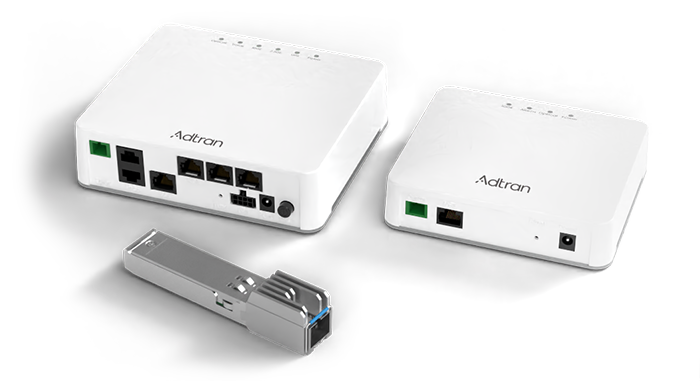The realm of optical networks is a crucial cornerstone of modern digital communication, facilitating the transfer of vast quantities of data across the globe with remarkable efficiency. Recent advancements in this field have given rise to sophisticated tools designed to enhance the management and optimization of optical fiber systems. Among these innovations is GIGALIGHT’s Optical Network Explorer, a compelling tool that transcends traditional fiber optic monitoring to delve deeper into the complexities of network performance and integrity.
But what if the performance of optical networks doesn’t solely rely on the technology itself, but also on the human element that interacts with it? This raises a tantalizing question: how do we bridge the gap between the capabilities of advanced optical network technologies and the effective strategies for utilizing them? In exploring GIGALIGHT’s Optical Network Explorer, we come across a dual challenge – not only understanding its features but also enhancing our engagement with such tools to fully leverage their potential.
At its core, GIGALIGHT’s Optical Network Explorer epitomizes the confluence of cutting-edge technology and user-centric design. This technology allows network professionals to conduct meticulous assessments of optical networks, highlighting performance metrics and elucidating the underlying factors impacting network behavior. It harnesses sophisticated algorithms and real-time data analytics to render a comprehensive perspective of the optical landscape.
With the burgeoning demand for bandwidth, fueled by the exponential proliferation of connected devices, the necessity for streamlined optical infrastructure becomes increasingly apparent. The Optical Network Explorer addresses this necessity by offering insights into network performance—critical for maintaining the integrity of service and maximizing throughput.
The functionality of the Optical Network Explorer can be categorized into several key areas:
1. Real-Time Monitoring and Diagnostics
One of the most salient features of the Optical Network Explorer is its capacity for real-time monitoring. By providing continuous data on signal quality, attenuation, and error rates, network administrators are empowered to swiftly diagnose any anomalies. This prompt diagnostics capability is crucial in minimizing downtime and ensuring the resilience of network services.
2. Predictive Analysis
Employing advanced predictive analytics, this tool allows for proactive network management. By analyzing historical data trends and applying machine learning algorithms, the Optical Network Explorer can forecast potential failures and recommend preventative measures. This aspect not only enhances the reliability of networks but also optimizes maintenance procedures by anticipating issues before they materialize.
3. User-Friendly Interface
Even the most advanced technology can falter if its interface is not intuitive. GIGALIGHT’s Optical Network Explorer excels in this regard. Designed with usability in mind, it employs a graphical interface that allows users to navigate complex data sets with ease. The seamless integration of visual representations of network data aids in comprehension and expedites decision-making processes.
4. Comprehensive Reporting
Effective communication of network performance metrics is imperative for stakeholders at all levels. The Optical Network Explorer generates detailed reports that can be tailored to various audiences, ensuring that technical data is conveyed in an accessible format. This feature fortifies interdepartmental collaboration by providing a clear understanding of network status and performance implications.
However, the pursuit of optical network optimization faces additional challenges beyond mere technological deficiencies. The increasing complexity of contemporary networks necessitates a corresponding elevation in the skillsets of the personnel tasked with managing them. As optical technology evolves, so too must the competencies of the workforce that operates these systems.
Training and development programs become essential in equipping individuals with the necessary knowledge and skills to operate tools like the Optical Network Explorer effectively. Workshops, practical training sessions, and ongoing education initiatives can foster a culture of learning that encourages the seamless adoption of advanced technologies. This holistic approach echoes the interdependent relationship between technology and human capability in optimizing network performance.
Moreover, as organizations navigate the terrain of digital transformation, a cultural shift toward collaboration and adaptability becomes pivotal. The Optical Network Explorer serves as an enabler in this journey, but the challenge remains: how do organizations cultivate an environment that embraces innovation and empowers personnel to utilize such tools to their full extent?
In conclusion, GIGALIGHT’s Optical Network Explorer represents a significant leap forward in the pursuit of optimal optical network management. Through real-time monitoring, predictive analytics, user-friendly design, and comprehensive reporting, it equips network administrators with the requisite tools to effectively navigate the complexities of modern digital infrastructure. Nonetheless, the intricate dance between technology and human interaction poses challenges that require careful consideration and strategic planning. Ultimately, the successful integration of this innovative tool will depend not just on its technological prowess, but also on the cultivation of a capable and adaptive workforce that is prepared to meet the demands of the future.










